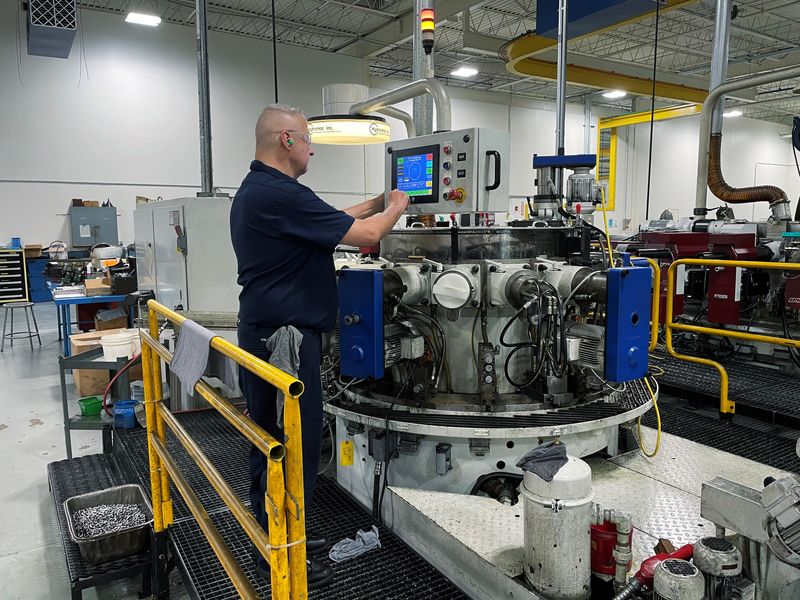WASHINGTON (Reuters) - Production at U.S. factories accelerated in February, shrugging off a continued slump in motor vehicle output, pointing to sustained strength in manufacturing amid a healthy demand for goods even as consumer spending reverts to services.
Manufacturing output increased 1.2% last month after edging up 0.1% in January, the Federal Reserve said on Thursday.
Economists polled by Reuters had forecast factory production accelerating 0.6%. Output jumped 7.4% compared to February 2021.
Manufacturing, which accounts for 11.9% of the economy, has benefited from a shift in spending to goods from services during the COVID-19 pandemic.
But manufacturers have struggled to cope with the strong demand amid an acute worker shortage, caused by the coronavirus, on factory floors and other places along the supply chain.
Supply bottlenecks had shown signs of easing in recent months, but that progress is likely to be stalled by Russia's war against Ukraine as well as new lockdowns in China following a resurgence in COVID-19 infections.
Production at auto plants fell 3.5% last month, marking the third straight monthly decline. Motor vehicle production continues to be restrained by a global shortage of electronic components.
February's surge in manufacturing output combined with a 0.1% gain in mining to lift industrial production 0.5%. That followed a 1.4% jump in January. Utilities production dropped 2.7% after vaulting 10.4% in January amid freezing temperatures in many parts of the country.
Capacity utilization for the manufacturing sector, a measure of how fully firms are using their resources, increased 0.9 percentage point to 78.0% in February. It is 2.5 percentage points higher than its pre-pandemic level but 0.1 percentage point below its long-run average.

Overall capacity use for the industrial sector rose 0.3 percentage point to 77.6% last month. It is 1.9 percentage points below its 1972-2021 average.
Officials at the Fed tend to look at capacity use measures for signals of how much "slack" remains in the economy — how far growth has room to run before it becomes inflationary.